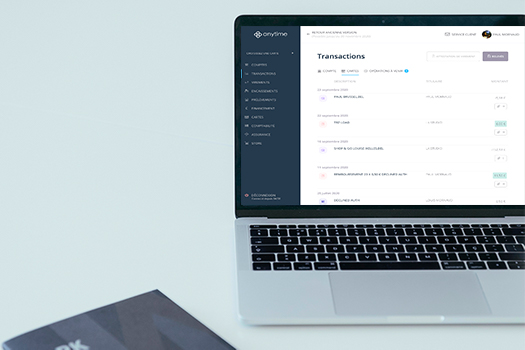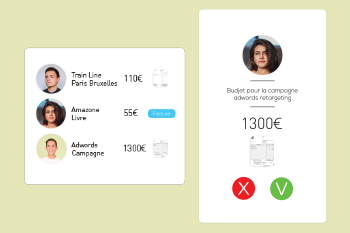Even if this activity has been booming for a few years now, becoming an Uber driver can't be improvised. It's a real professional project that requires time and dedication. To become a professional VTC driver, you'll need to take a number of essential steps, such as: + undergo training in regulations and safety, + obtain a SIREN number.

Here's how to launch your new business on the platform.
Step 1: obtaining authorization to transport passengers
To become an Uber driver, you need to hold a VTC (Voiture de transport avec chauffeur) professional card. To do this, you'll need to pass a 3h50 exam comprising 7 tests: + transport regulations + road safety + business management + understanding of French + understanding of English + business development + national VTC regulations.
Depending on the test, it may be either a multiple-choice question (MCQ) or a short-answer question (SAQ). Passing this exam is not enough to obtain a professional card. The VTC profession is regulated, and you will need to meet a number of conditions in order to practice it: + you must have held a "B" driving license for more than 3 years (or 2 years in the case of accompanied driving) + you must have completed the PSC1 (Prévention et secours civiques de niveau 1) course within the last 2 years + you must have passed the compulsory medical examination + you must not have been penalized for driving without a license + you must never have been sentenced to a prison term of more than 6 months + you must not have had half the points on your driving license reduced.
Step 2: Setting up a transport company
Choosing a status for a private chauffeur
Once you have your VTC card, you need to choose a legal status for your business. You can choose between a sole proprietorship (microentreprise, EI or EIRL) or a one-person company (SASU, EURL).
While the micro-entrepreneur status may seem attractive for its simplicity of implementation and management, it is no longer suitable when the business is expanding. Indeed, the microentrepreneur regime implies a sales limit. Above all, it does not allow you to deduct professional expenses, which can be relatively high for a VTC driver (fuel, car hire, social security contributions, etc.).
For these reasons, many VTC drivers opt to set up their own company.
Register as a VTC to obtain a VTC license
Once your company has been set up, you still need to obtain a VTC license before you can operate. To do this, register with the VTC register by post or online on the Ministry of Transport website. It will take about 1 month for the registration to become effective. The license is valid for 5 years. To register on the VTC register, you'll need to provide the following documents: + a certificate of professional civil liability + a copy of your company's registration certificate (K-Bis extract for companies or SIRENE status notice for micro-entrepreneurs) + a copy of the registration certificate for the vehicle you will be using for your activity + a copy of both sides of your VTC professional card + proof of financial capacity of at least €1,500, unless you own the vehicle or are a long-term lessee (rental contract of more than 6 months). For companies, a share capital of €1,500 can be used as proof of financial standing.
The registration fee for the VTC register is €195. Once your registration has been validated, you will receive your certificate with your registration number. You can then complete and print the red VTC badge to be affixed to the front and rear of your vehicle.
While you're waiting to receive your definitive VTC registration certificate, Uber can rent you a "provisional license" so that you can start your business more quickly. In this case, the platform charges you an additional commission, on top of the usual one.
Step 3: I have my SIREN, how do I become an Uber driver?
Equipping a suitable vehicle
To become an Uber driver, you must purchase or lease a vehicle approved by the platform. Vehicles are classified into 5 categories: + the UberX range: vehicles under 6 years old, with 4 to 9 seats, and no color restrictions + the UberACCESS range (transport for people with reduced mobility): TPMR vehicle and TPMR training certificate (vehicles also fall into the UberX category) + the Van range (Paris and Côte d'Azur only): dark-colored vehicle under 4 years old, with top-of-the-range finishes. The driver must have completed at least 2,000 trips and have a rating of 4.75 or more + the Berline range (Paris, Lyon and Côte d'Azur): top-of-the-range dark-colored vehicle less than 4 years old. The driver must have at least 5,000 journeys and a score of 4.8 or more. + UberGREEN range (Paris only): hybrid or electric vehicles.
Take out the necessary insurance
Being a VTC driver involves risks not only for you, but also for your customers and other road users. That's why it's compulsory to take out : + RC Pro (Professional Civil Liability), which covers damage caused to a customer or third party in the course of your business. + an RC Circulation (Responsabilité Civile Circulation) which covers damage caused to a customer or third party involving your professional vehicle.
Being a VTC driver is not an activity to be taken lightly. Given the different facets of the profession (customer relations, driving), it's essential to carefully consider the question before taking any steps.
You should also know that whatever legal status you choose, you'll need a dedicated bank account. That's why Anytime offers a business account with services perfectly suited to your activity.








